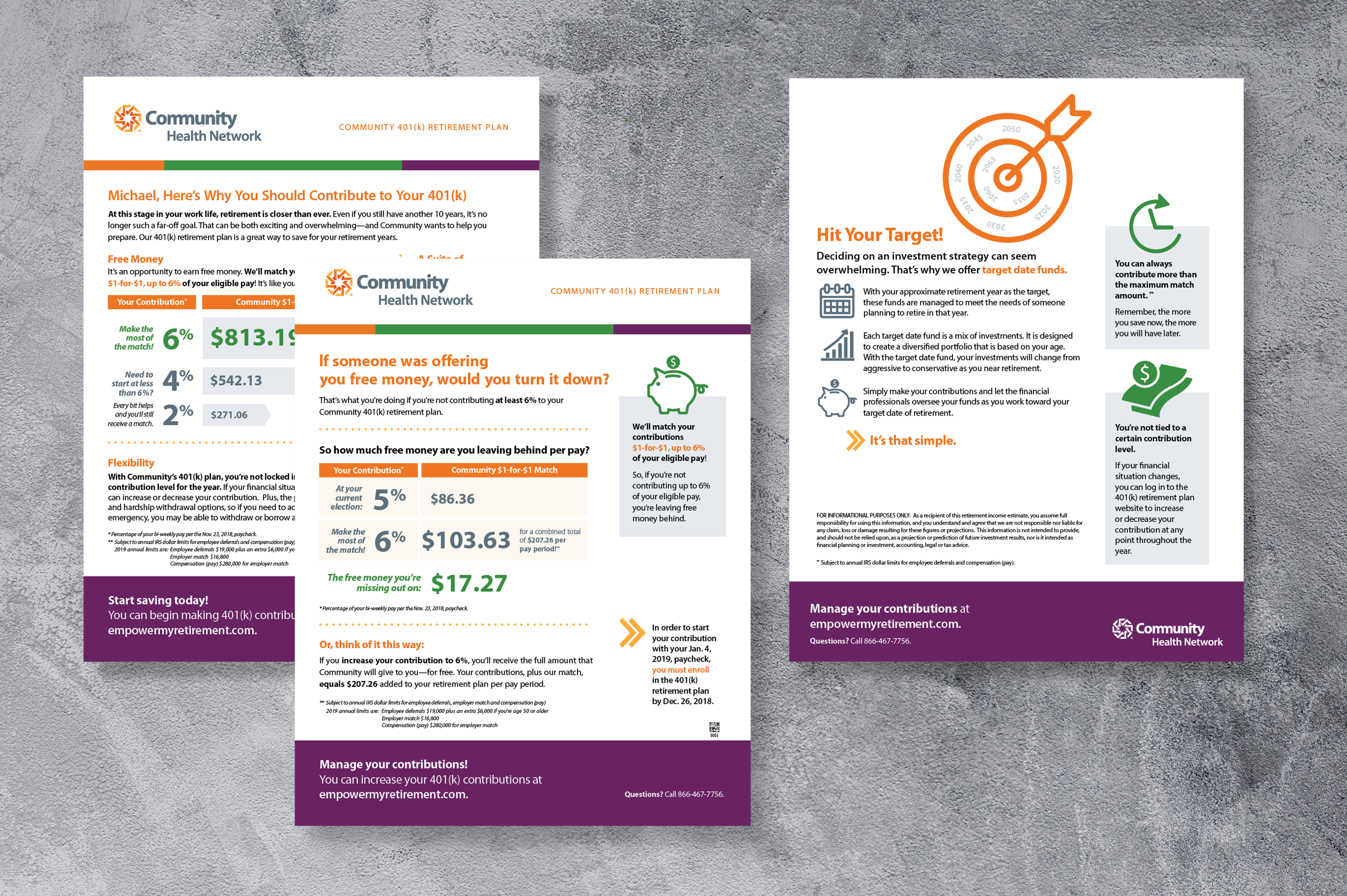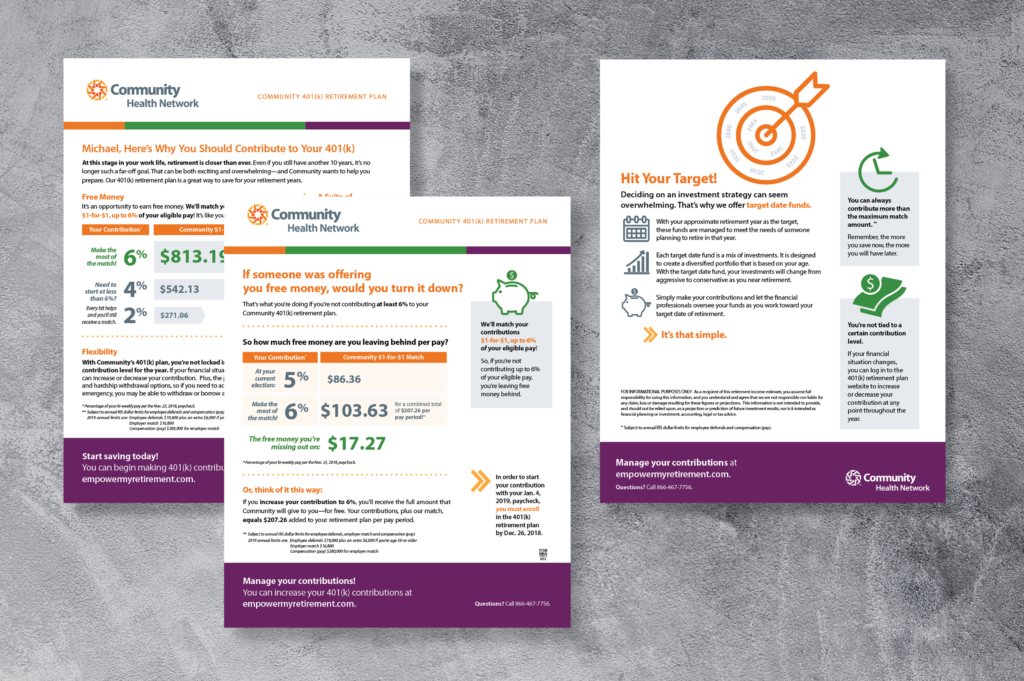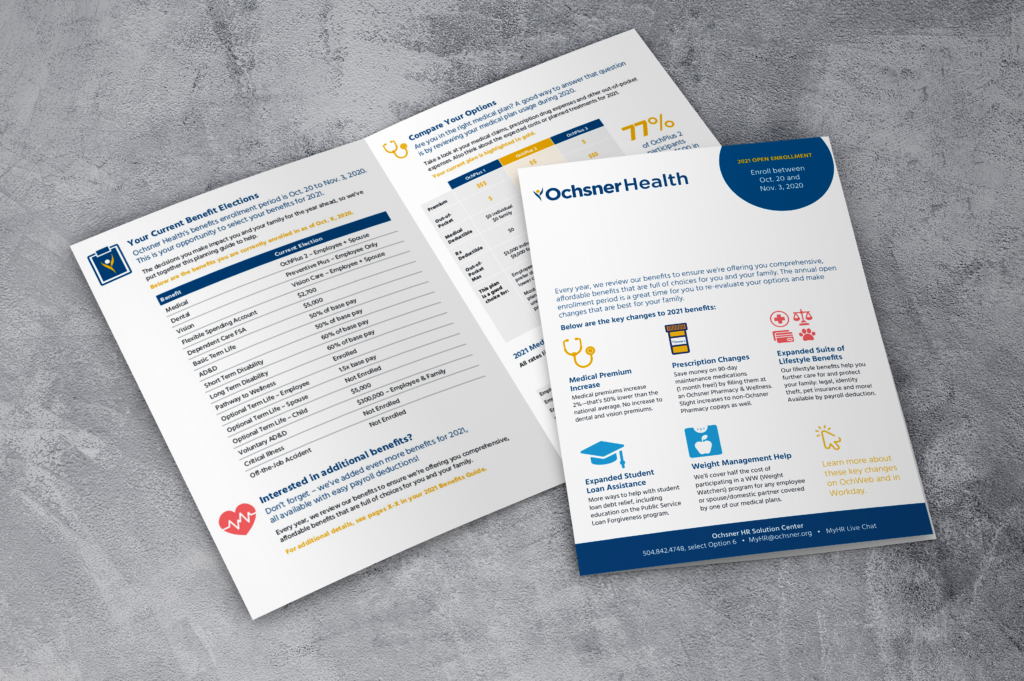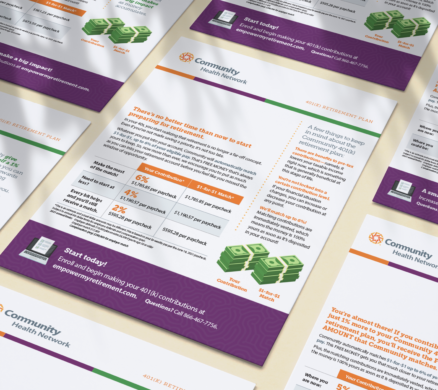
Updated April 2022
When it comes to benefits communications, one size does not fit all. In fact, it’s almost guaranteed if you try to tell every employee everything about every benefit, your communications will fail to resonate with a large portion of your audience. It’s what we call benefits overload—and it’s all too common. Employees either completely miss what you wanted them to know, or worse, they fail to take action on important deadlines because they don’t understand what applies to them.
That’s why, at Westcomm, we’re big believers of using data to drive your communications messaging and target audiences.

Develop data-driven, segmented messages
Consider this example: One hospital network wanted to encourage greater participation in its 401(k) retirement plan and had been trying to move the needle for years. However, the mass communications weren’t landing with employees. We asked our client to pull some data so we could better understand the employee population. After thorough evaluation, we discovered there were two primary target groups:
- Not participating at all and leaving the company match (aka, free money) on the table
- Participating but not at the level to receive the full match (again, leaving free money behind)
To understand their possible motivations for each target group, we dove deeper—segmenting by age range. Then, we crafted messaging that was more likely to resonate and prompt employees to take advantage of this program and the company’s rich $1-for-$1 match. In the end, we had nine different mailers, each with messaging based on age range and participation level.
Leverage data to personalize messages
In addition to segmented communications, we leveraged data to personalize the messages—by individual—making it even more meaningful. For our target audiences, we listed what percentage they were contributing, how much of the match this afforded them and, perhaps most convincingly, how much of the match (what we termed “free money”) they were leaving behind.
Needless to say, we moved the needle. The campaign increased participation by 10 percent.

Slice data by different variables
Slicing data by different factors also helps simplify complex employee populations. For example, one healthcare client has five separate entities and, as a result, more than 27 different benefit groups (including 10 different medical plans). Understandably, it would be easier to do more mass communication pieces. But that could be confusing for employees.
That’s why, for this client’s open enrollment, we segmented and personalized communications a few different ways to make the benefits communications more meaningful and relevant. We sliced the employee population by:
- Entity (open enrollment guide, internal articles and emails)
- Benefits group and premium groups (addendums)
- Personal elections from previous year (personalized newsletter)
By slicing data and personalizing messages, employees received benefits information that applied only to them—and they could more easily make decisions.
Provide only what matters
Using data to drive benefit communications ensures that your employees receive the information that matters to them. It shows that you care, you respect their time, and they are more than just numbers. This makes benefits more meaningful and helps employees make better decisions. No employee wants to wade through information while trying to guess what applies to them!
Want to chat? Reach out at helloindy@westcomm.com or follow us @westcomm on LinkedIn for more insights.





